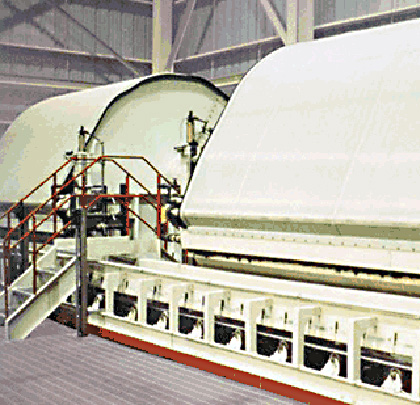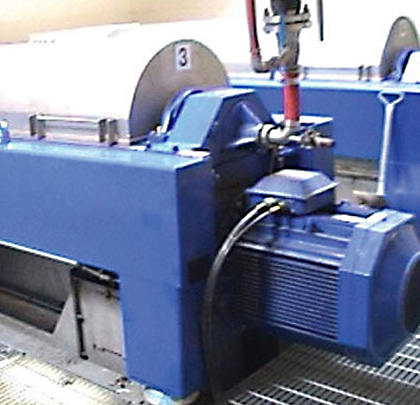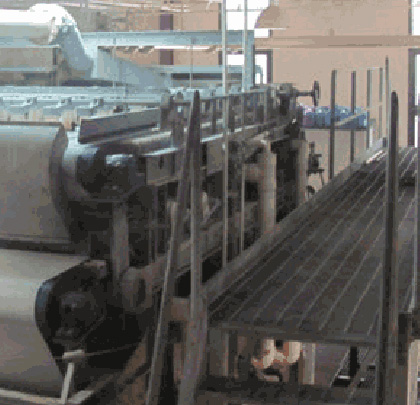In part 1 of this article, we examined the role of aerobic and anaerobic digestion for solids handling and sludge dewatering in water and wastewater treatment. Now, in this concluding piece, we will take a closer look at the balancing act between energy efficiency and environmental concerns. The goal of a net-zero energy water and wastewater treatment plant is attainable, but it will necessitate managers embracing a totally efficient operation throughout the dewatering and filtration process.
Dewatering removes the water from sludge so the processed sludge volume will be minimized as much as possible. Rotary vacuum filters and belt filter presses are the common type of dewatering (Reynolds and Richards 1996). However, centrifuges and dryers are becoming more popular. The dewatered sludge is usually deposited at a landfill; however, some grades of sludge can be used for land applications.
DEWATERING AND FILTRATION TECHNOLOGY
Further, technologies need to be used to dry sludge better and to use the energy potential. Dewatering typically is not a major energy user in a wastewater treatment plant. It is however, an energy user and any opportunity to gain efficiency should be implemented. Belt filter presses by far consume less energy than the other dewatering processes; unfortunately, it does not have the driest sludge.
A rotary vacuum filter consists of a cylindrical drum with a filter material. The drum slowly rotates through a sludge vat and the vacuum in the drum attaches the sludge to the filter. The water is drawn through the filter and leaves a sludge cake on the filter. As it rotates to a scraper, the sludge is removed from the filter and the dried cake is processed. A belt filter press consists of two converging belts that press the solids together through a fine mesh screen in the press zone. The sludge then must pass through disks that further dewater the sludge. A rotary vacuum filter uses very little energy. Motors are used to turn drums and move the belts.

Figure 6
CENTRIFUGES AND ENERGY CONSUMPTION
Centrifuges spin with a bowl and have an internal scroll that moves the dried sludge to the end of the centrifuge. The device uses two motors, one for the bowl and one for the scroll. Further, the system uses more energy than the vacuum or belt filter. Dryers use a gas fired furnace to dry the sludge and move the sludge through a process that forms powder or pellets. Pellets are typically easier to land fill or use for land applications. Powder sludge is difficult to handle and can have dust problems that may cause an explosion.
The primary energy user in a sludge drying system is the use of natural gas if digester gas is not available from an anaerobic digester. Further, the dryer will have a scroll device driven by a motor. Another type of system that requires little energy and large land areas is a sludge drying bed. The sludge is placed in a bed and allowed to dry by natural processes. Moving around the sludge with front end loaders will also use energy.
The primary ECMs for sludge drying are NEMA Premium® efficiency motors and VFDs with centrifuges. Further, dynamic monitoring and control of the process will ensure efficient operation and energy usage. Newer technologies are being investigated that combines vacuum filters, drying technology and compression to obtain 70 perent dry sludge and 90 percent solids capture.
THE CHALLENGES OF EFFICIENT DEWATERING
Sludge dewatering and handling offer some of the traditional challenges for pumping. The challenges include the following:
Oversized pumps: a result of conservative application and/or provisions for capacity expansion
Varying duty cycles: rarely do pumps run full speed 24/7, but they have to be sized for the maximum operating point
BEP matching: the opportunity to run pumps closer to their most efficient operating point
Variable frequency drives (VFDs) provide an excellent active approach to energy management. VFDs can regulate motor speed and in turn pump speed, which results in the following:
The ability to adjust motor speed to address oversized pumps—reducing energy consumption.
The ability to match motor speeds to duty cycle demands—reducing energy consumption in “low run” situations.
The ability to run pumps more closely to their BEP—again reducing energy consumption.

Figure 7
MONITORING AND AUTOMATION
Proper application of pump systems is an important aspect to gaining energy management for sludge handling and dewatering. Developing the ability to monitor pump system efficiencies as well as process efficiencies can reduce overall operational expenditures. With proper monitoring, sludge handling and dewatering and pump system efficiencies can be trended and information can be used for demand response programs or monitor increased energy costs due to energy tariffs.
Automation is also required to reduce operational costs for sludge handling and dewatering. Automation is used to integrate optimization strategies that are too complex for manual control. The strategies may consider proper times based on rate structures from power utilities and which systems operate the most efficient. Additionally, automation will allow for better alarming for proactive maintenance and operation of the facility.
LONG-TERM BENEFITS
Reduction in operational costs with sludge handling and dewatering can be achieved for both water and wastewater facilities. The key is to understand the system, find ways to optimize the processes, and monitor and verify the results. Proper application of pumps is critical and varying speed with VFDs and automation will help achieve a successful energy reduction project. Finding additional approaches to utilize sludge for generation of energy, public reuse, or nutrient recovery is an excellent way to gain a neutral carbon footprint and reduce environmental impacts on society while gaining economic benefits. ■
REFERENCES
O’Connor, K. (2007). “Improving Energy Efficiency of Your Municipal Treatment Facility.”
Reynolds, T. D., and Richards, P. A. (1996). Unit Operations and Processes in Environmental Engineering, Second Ed., PWS Publishing Company. Boston, MA.
Water Environment Federation. (1997). Energy Conservation in Wastewater Treatment Facilities, Manual of Practice no. MFD-2, Water Environment Federation.
_________________________________________________________________________
ABOUT THE AUTHOR
Lee E. Ferrell, P.E., BCEE, CEM, is a water and wastewater energy and process consultant for Schneider Electric’s Water Wastewater Competency Center. He has more than twenty-five years of industry experience and serves as the chairman for the AWWA Energy Management Committee.
_________________________________________________________________________
MODERN PUMPING TODAY, June 2013
Did you enjoy this article?
Subscribe to the FREE Digital Edition of Modern Pumping Today Magazine!
![]()


